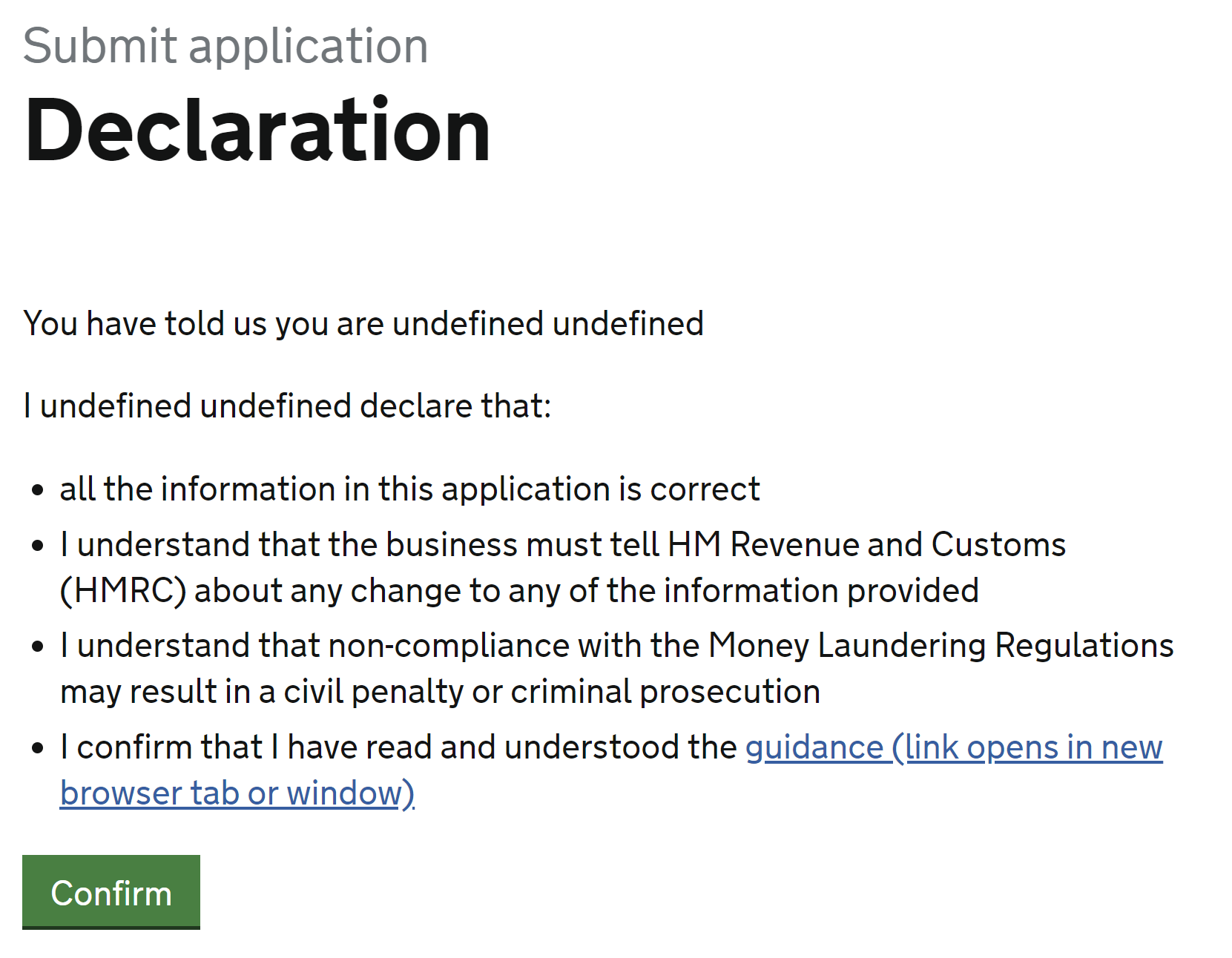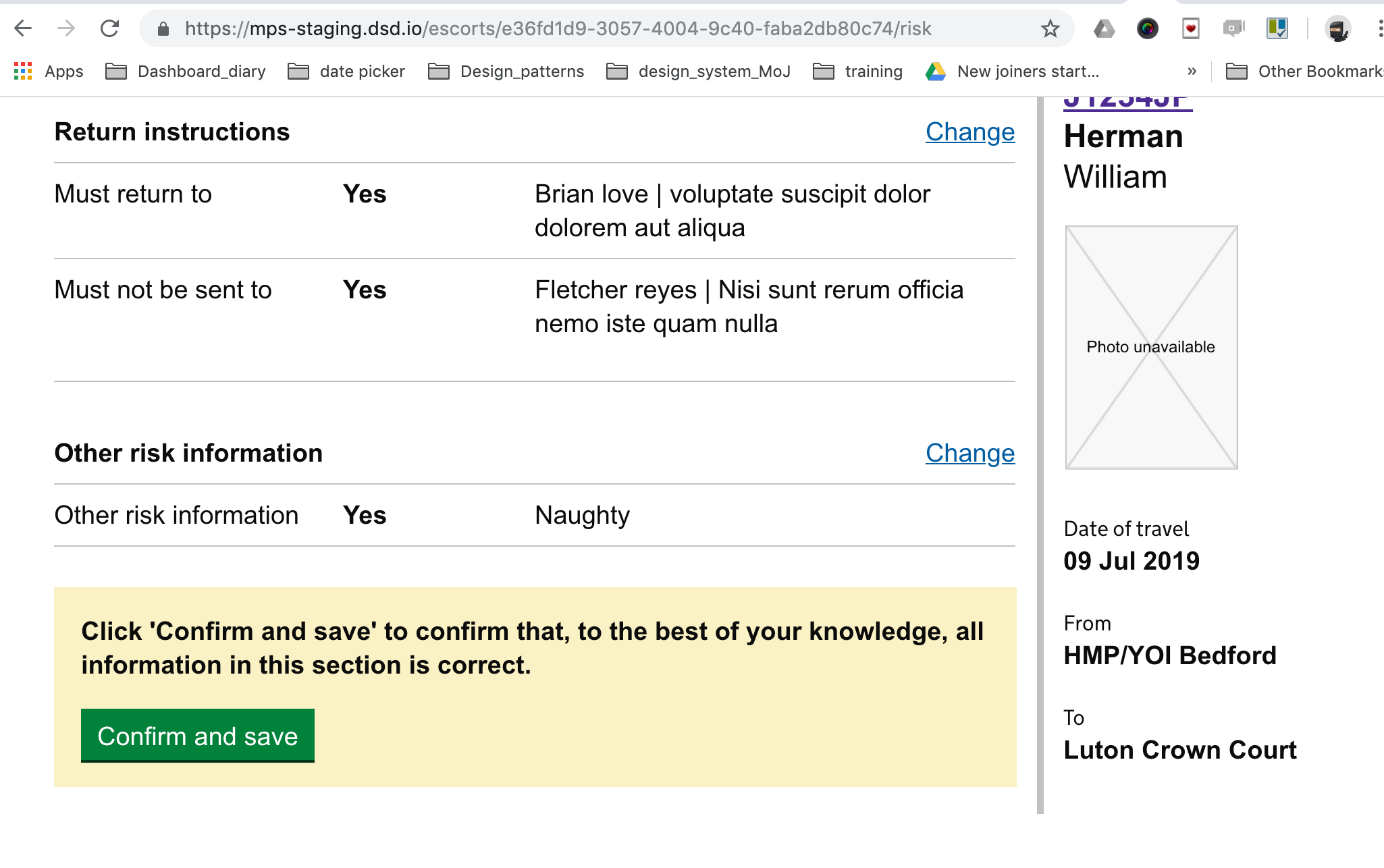At HMRC we've come across the need for a submitter identity function within this pattern. That is, the need to know that the person submitting the information is the right person in the organisation. All the HMRC patterns we have currently assume that the person submitting has the right to declare. I wonder if this might be worth a variant?











What
Help users tell you that they've understood or agree to something.
Why
This is used on many government services including:
Anything else